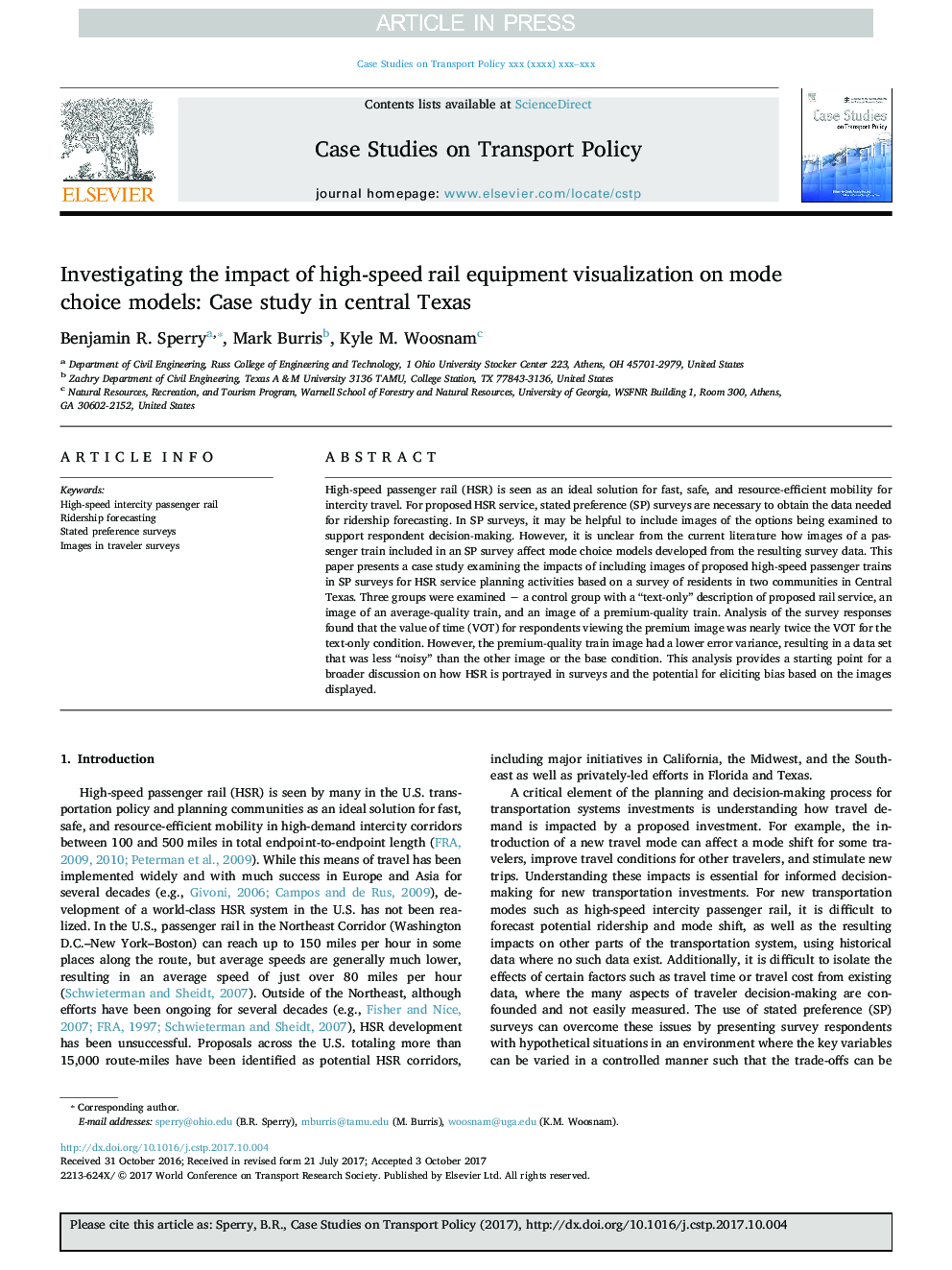| Article ID | Journal | Published Year | Pages | File Type |
|---|---|---|---|---|
| 6702303 | Case Studies on Transport Policy | 2017 | 13 Pages |
Abstract
High-speed passenger rail (HSR) is seen as an ideal solution for fast, safe, and resource-efficient mobility for intercity travel. For proposed HSR service, stated preference (SP) surveys are necessary to obtain the data needed for ridership forecasting. In SP surveys, it may be helpful to include images of the options being examined to support respondent decision-making. However, it is unclear from the current literature how images of a passenger train included in an SP survey affect mode choice models developed from the resulting survey data. This paper presents a case study examining the impacts of including images of proposed high-speed passenger trains in SP surveys for HSR service planning activities based on a survey of residents in two communities in Central Texas. Three groups were examined â a control group with a “text-only” description of proposed rail service, an image of an average-quality train, and an image of a premium-quality train. Analysis of the survey responses found that the value of time (VOT) for respondents viewing the premium image was nearly twice the VOT for the text-only condition. However, the premium-quality train image had a lower error variance, resulting in a data set that was less “noisy” than the other image or the base condition. This analysis provides a starting point for a broader discussion on how HSR is portrayed in surveys and the potential for eliciting bias based on the images displayed.
Keywords
Related Topics
Physical Sciences and Engineering
Engineering
Civil and Structural Engineering
Authors
Benjamin R. Sperry, Mark Burris, Kyle M. Woosnam,
